This defensive line play is more like what many expected from Day 1 of the 2022 season
A major defensive turnaround appears underway for the New York Jets.
Over the first three weeks of the season, the defensive line was the most disappointing unit on the team. Despite high draft picks and tens of millions of dollars invested, they were average at best, with all but Quinnen Williams underachieving.
Then everything changed in Week 4. The Jets’ defensive line came alive and battered Mitchell Trubisky and Kenny Pickett in Pittsburgh. They followed that up with an even better performance against the Miami Dolphins.
This is how the Jets’ pass rush statistics from Weeks 1-3 compare against Weeks 4-5:
Weeks 1-3
- 432 Pass Rush Snaps
- 38 Pressures
- 8.8% pressure rate
- 11 QB Hits
- 5 Sacks
Weeks 4-5
- 296 Pass Rush Snaps
- 44 Pressures
- 14.9% pressure rate
- 17 QB Hits
- 5 Sacks
It’s safe to say the Jets became much more productive. But what caused the change? Let’s find out.
Bryce Huff is a difference-maker
After being inactive for the first three weeks, Bryce Huff quickly reminded the coaches why he should never be inactive again. In just 24 pass rush snaps, Huff has managed to rack up seven pressures.
His 29.2% pressure rate is the best among all edge rushers with at least three pass-rushing snaps. The small sample size emphasizes Huff’s value as a situational pass rusher.
While he may not be the next Lawrence Taylor, his impact on the field is impressive. Consider the team’s numbers on Huff’s nine snaps against the Steelers – the Jets had a 21.6% pressure rate when he was on the field versus a 5.4% pressure rate when he was off.
When Huff is on the field with Quinnen Williams and Carl Lawson (19 snaps) this season, the defense has 15 pressures, six QB hits, and three sacks.
Despite only playing 27% of pass rush snaps together, they account for 34% of the pressures, 35% of the QB hits, and 60% of the sacks.
Huff’s ability to win with speed and force the quarterback to scramble opens opportunities for others to finish the play. Given how he’s performed and the benefit of his teammates, Huff should be on the field for every obvious passing situation moving forward.
The Jets are blitzing less
In Week 3, there was a heated discussion on the sidelines between Quinnen Williams and defensive line coach Aaron Whitecotton. Williams was upset that the coaches didn’t trust the defensive line to get pressure without the blitz. Since then, the Jets have blitzed less received more bang for their buck.
The Washington Commanders have generated a league-high 37.4% pressure rate with 4-or-fewer pass rushers this season.
WAS Pressure Leaders (2022)
🥇 Montez Sweat: 21 (T-4th in NFL)
🥈 Jonathan Allen: 18 (2nd among IDL)
🥉 Daron Payne: 14 (5th among IDL)#WASvsCHI | #HTTC pic.twitter.com/MXYOo0z31A— Next Gen Stats (@NextGenStats) October 13, 2022
In Weeks 1-3, the Jets blitzed on 19.1% of all dropbacks and got pressure on 55% of blitz attempts. In Weeks 4-5, that number was cut in half to 8.8%, while the efficiency improved to pressure on 67% of blitz attempts.
So if the Jets were getting pressure on 55% of their blitz attempts to begin with, why would avoiding the blitz improve the situation?
For one thing, the Jets don’t have a single sack while blitzing.
More than that, however, is that blitzing clogs openings that the Jets’ defensive line could exploit. On one play before the sideline outburst, Quinnen had beaten his man but was unable to move upfield due to the blitzing linebacker. Blitzing has a time and place, as Sauce showed, but overuse can hamper the defensive line.
I’ll discuss later how the Jets’ defensive line efficiency improved once the Jets started blitzing less.
Personnel usage
One of the biggest complaints Jets fans have is the rotation of the defensive line. Defensive coordinator Jeff Ulbrich rotates his players to keep them fresh. While rotating players isn’t wrong, having your best players on the sideline for 40% of snaps is a waste of talent.
Ulbrich is starting to rely on his best players a bit more. Here is a look at the percentage of dropbacks that each player rushed on from Weeks 1-3 versus Weeks 4-5:
| Weeks 1-3 | Weeks 4-5 | |
| Quinnen Williams | 67.6% | 76.5% |
| Sheldon Rankins | 59.0% | 54.4% |
| Nathan Shepherd | 32.4% | 27.9% |
| Solomon Thomas | 31.4% | 30.9% |
| Carl Lawson | 68.6% | 79.4% |
| John Franklin-Myers | 52.4% | 61.8% |
| Jermaine Johnson | 27.6% | 25.0% |
| Micheal Clemons | 29.5% | 22.1% |
| Bryce Huff | 0% | 35.3% |
| Jacob Martin | 42.9% | 22.1% |
The Jets made a few big changes to their personnel. First and foremost, Quinnen Williams, Carl Lawson, and John Franklin-Myers saw their snap share jump by an average of 10%. The Jets coaching staff finally listened to logic and kept their best players on the field.
Bryce Huff is active and serving as the primary pass rusher off the edge behind Lawson and Franklin-Myers. His eating up 35.3% of pass rush snaps, third among Jets edge rushers, brings us to our final point.
The Jets are playing their backups less. They have taken their least effective players off the field.
From Weeks 1 to 4, Nathan Shepherd and Solomon Thomas, who have 3 pressures across 107 pass-rush snaps this season, each played over 30% of the Jets’ defensive snaps in all four games. In Week 5, they each played a season-low snap percentage (Shepherd at 22% and Thomas at 28%).
All of these changes have ensured the Jets’ best four-pass rushers are on the field together far more frequently. Instead of “gasping for air”, the Jets’ top defensive linemen have responded to the increased snap count by playing even better.
Changes to the rotation have caused the efficiency to skyrocket
If the Jets simply made all of these changes but the players’ pressure rates did not change at all, the Jets would still be struggling to get after the quarterback. But the changes to the rotation have coincided with increased efficiency:
| Weeks 1-3 | Weeks 4-5 | Percent Change | |
| Carl Lawson | 12.5% | 18.5% | +48% |
| Quinnen Williams | 11.3% | 17.3% | +54% |
| John Franklin-Myers | 7.3% | 19.0% | +162% |
The Jets’ best players are dominating when given chances to stay on the field. Quinnen’s pressure rate jumps to 4% higher than any other qualified defensive tackle while Lawson and Franklin-Myers would both be in the top 6 among edge rushers.
The Jets’ stars aren’t the only ones to see this benefit. Outside of Sheldon Rankins and Solomon Thomas, every player on the Jets saw their efficiency improve following these changes.
There are several possible reasons for these changes. The added reps can allow players to get in a rhythm and use more counters. The offensive linemen could be getting tired from playing high-quality players more often rather than getting chances to take plays off against a backup.
Whatever the reason, the results are clear. Playing your best players works.
The Jets’ defensive line needs to keep this up
The pass rush is the backbone of Robert Saleh’s defense. His belief is that if you can create pressure, you can create turnovers. That has proven to be the case as the Jets have six takeaways in the last two games.
Moving forward, the Jets should continue to use this rotation. The only changes they could make now are playing Jermaine Johnson, Jacob Martin, and Bryce Huff on the edge more while moving John Franklin-Myers inside. Regardless, this is a step in the right direction.
The only question that remains is if they can keep this up against better offensive lines with better quarterbacks. Per PFF, the Steelers and Dolphins’ offensive lines rank 22nd and 31st in the NFL. They also faced Mitchell Trubisky, Kenny Pickett, and Skylar Thompson at quarterback.
Next, the Jets will square off against two of the most elusive quarterbacks of the last decade in Aaron Rodgers and Russell Wilson, who each play behind top 10 offensive lines. Will they be able to keep it up? It’s the perfect opportunity to announce that both the defensive line – and this young Jets team – are legitimate.

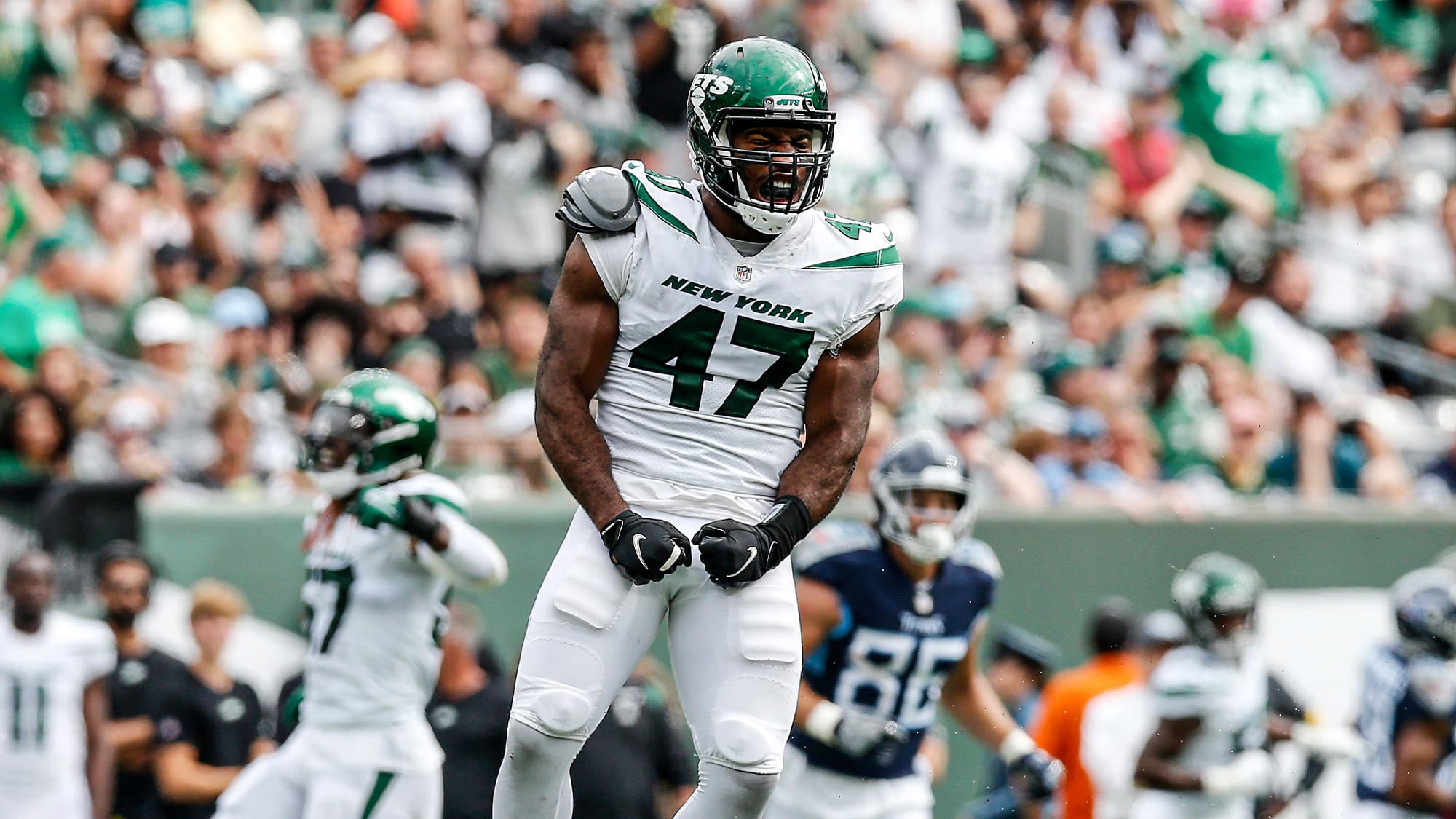




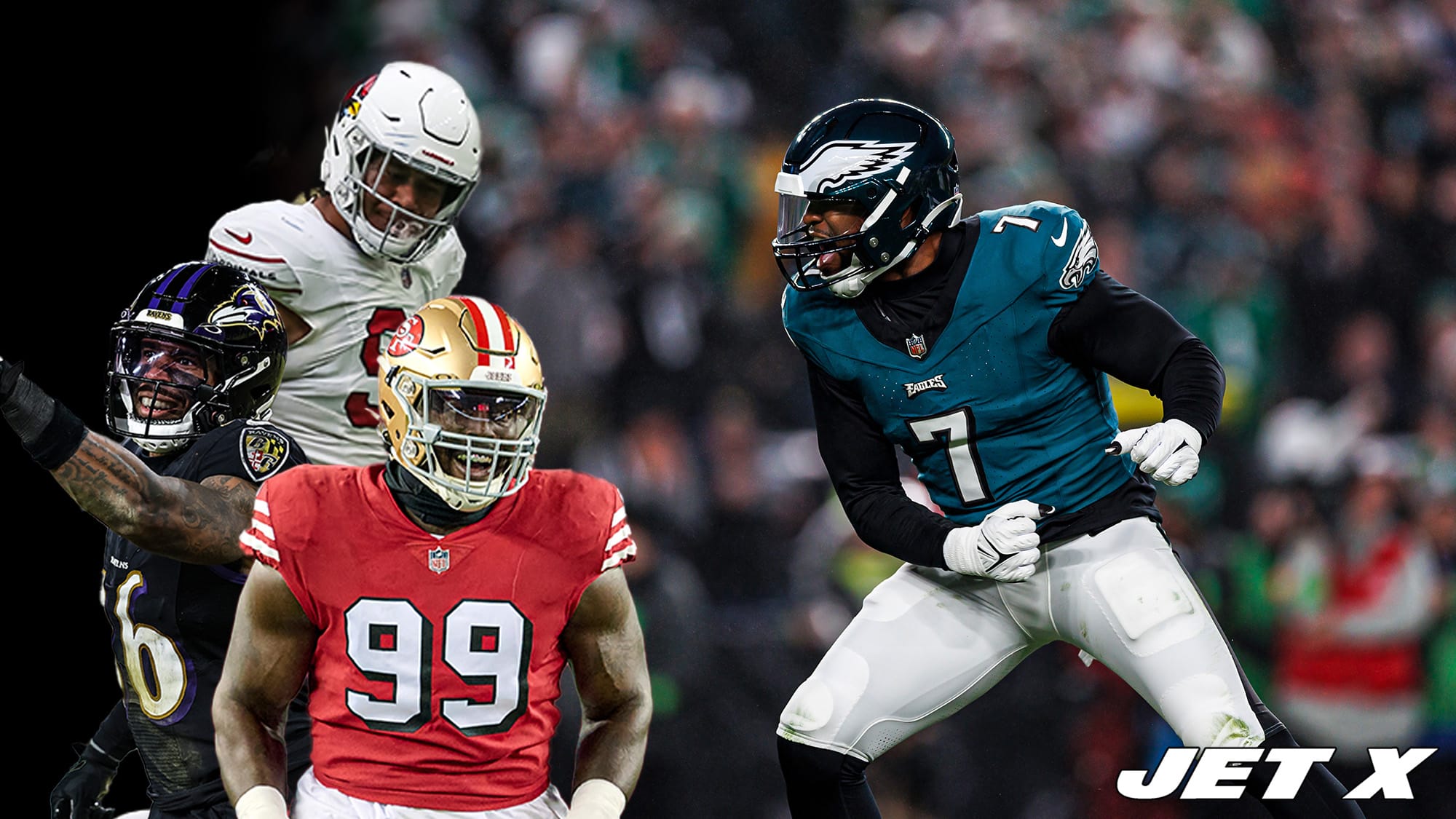



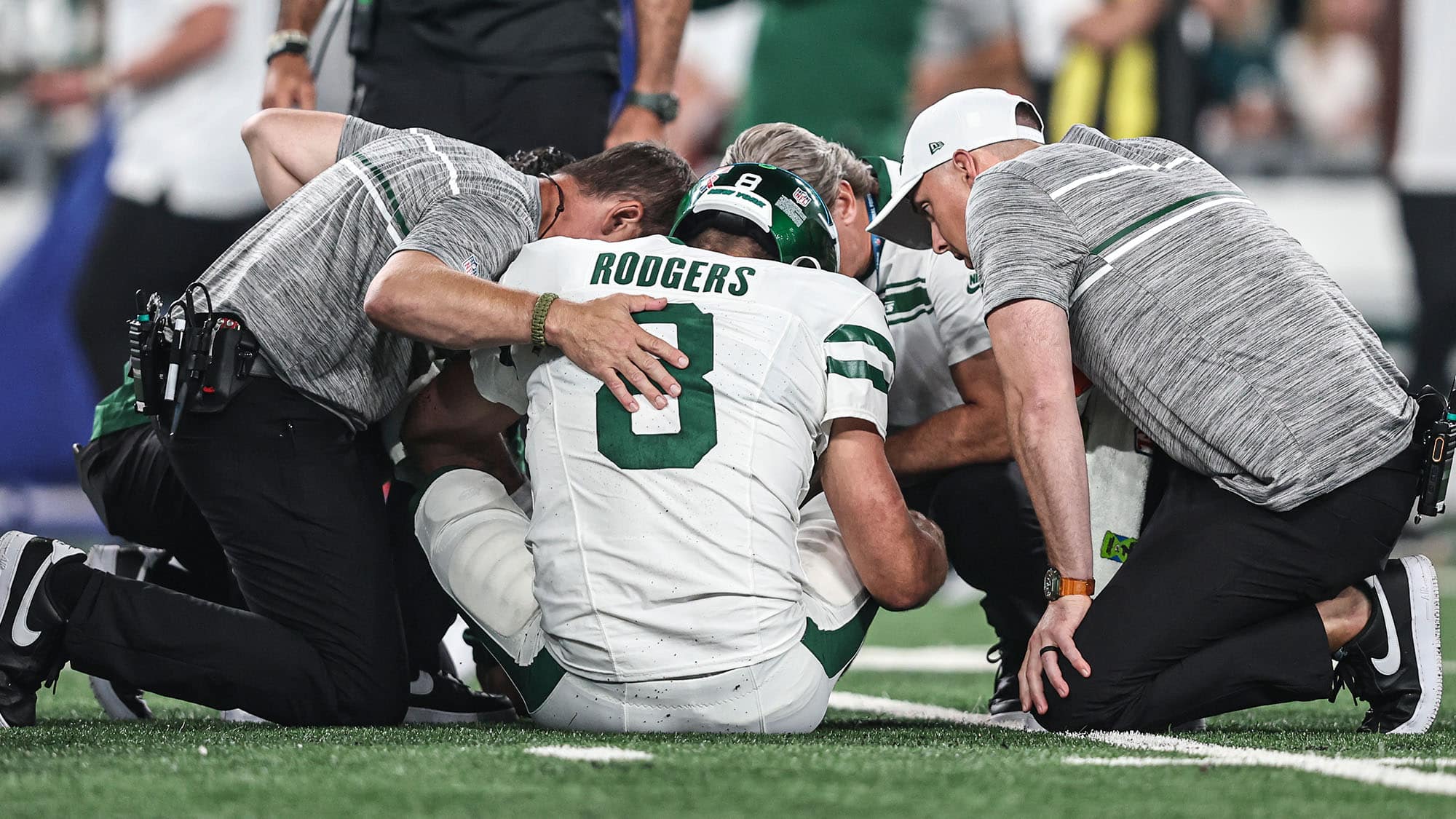
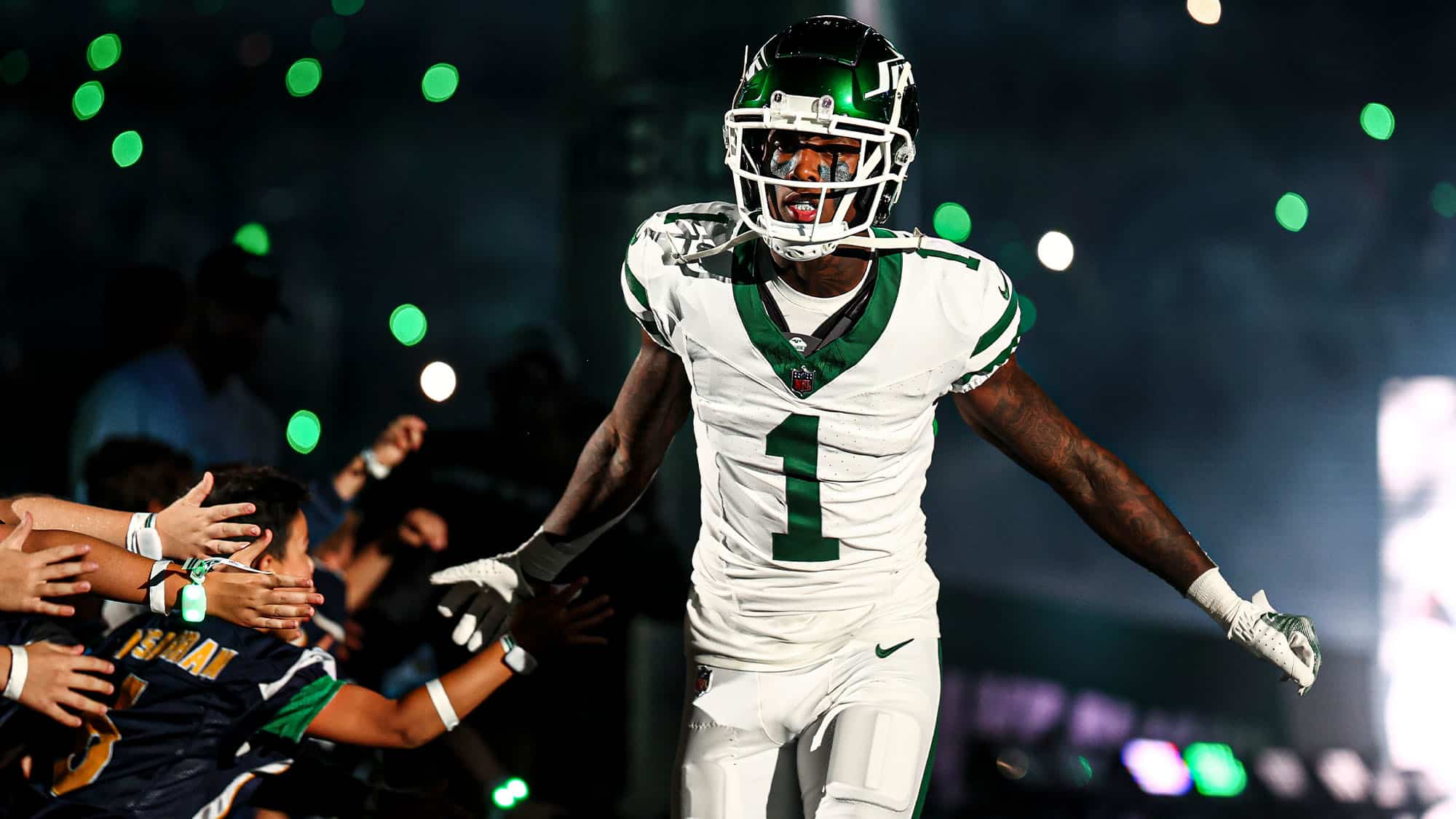

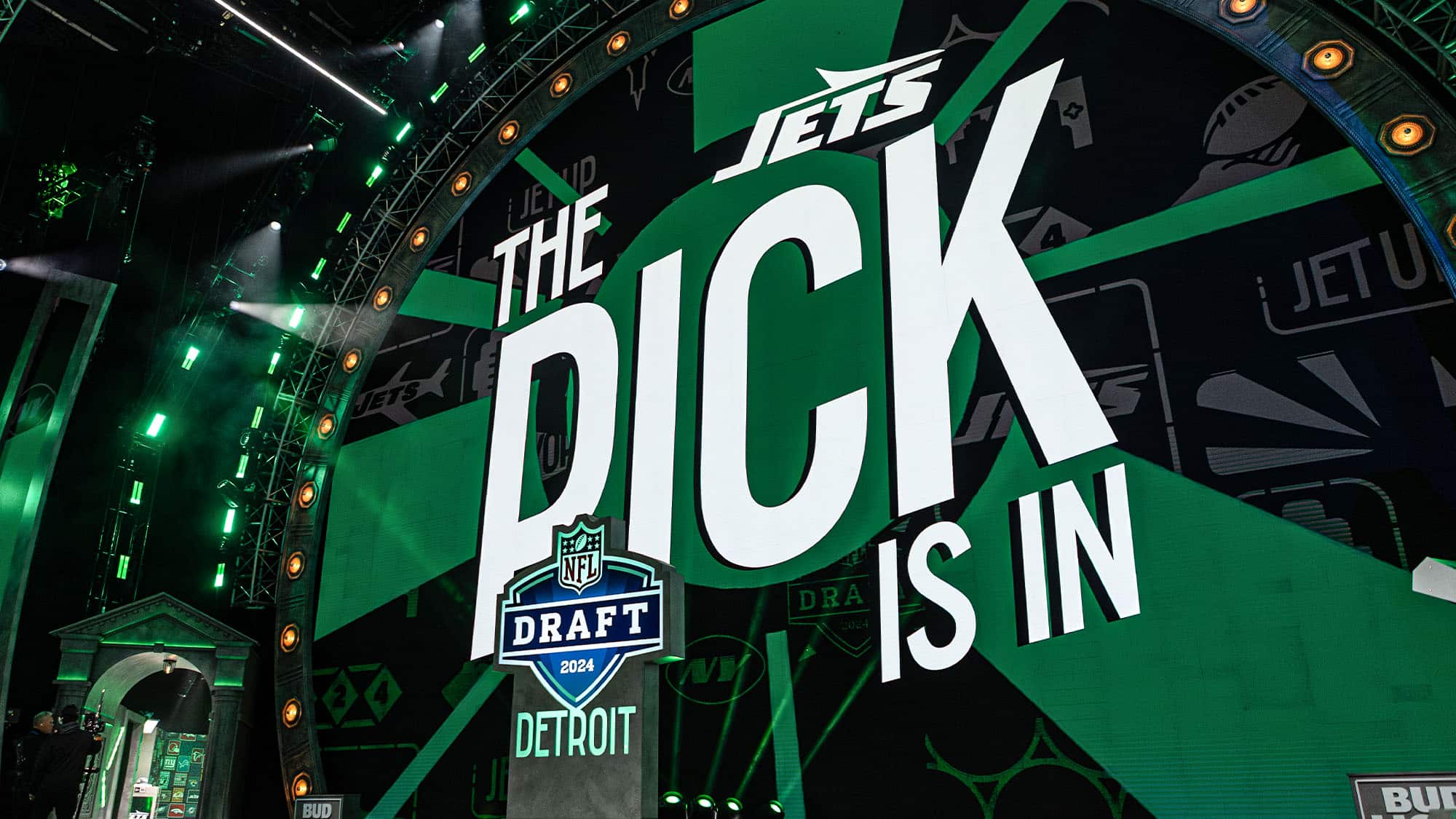
Stefan, I think you hit the nail on the head when you talked about Huff’s role and how that has increased the unit’s production overall. The pass rush is much more effective when the players are working in unison and creating opportunities for each other. The Jets have a lot of guys that try to win with power; Q, JFM on the edge, Johnson, Clemons, and Lawson for the most part, and only really have 2 true speed rushers; Huff and Martin. Huff has been much more effective at beating his man quickly that he has forced the QB to step into the other guys who are collapsing the pocket. At this point, you are completely right, Huff should be on the field for 100% of pure passing situations.
Good article.
Not quite Sack Exchange II, but pretty good pass rush. Which begs the question, what were the snap counts for the original SE? did those guys take any plays off?
Great article !!! Thanks for the insider info.
Good article. Thank you. Clearly the CS has adjusted the snap counts over the past two weeks giving the DL playmakers more chances to create havoc.
When they can get pressure without an exotic blitz, it frees up their other players to do their jobs, this is good news! Just extend THIS season!
I actually have a couple of other questions.
What is the average time QBs like Trubitsky and Pickett and the 3rd string Miami QB held the ball compared to Burrow and Cleveland?
How much of a role has the coverage played in allowing the pressure % to increase?
The 2 questions are kinda related, I’d assume the more inexperienced QBs generally take longer to make reads and get the ball out. But maybe the improved safty play has had a factor in that too?
This week is a great test. You can’t blitz Rodgers, you have to pressure up the middle or he’ll kill ya. On the other hand, his receivers are young and inexperienced and we should be able to cover them, cause we’ve covered everyone else. Im not expecting to beat Rodgers in GB but play well, keep it competitive and a loss here is not necessarily a step backwards.